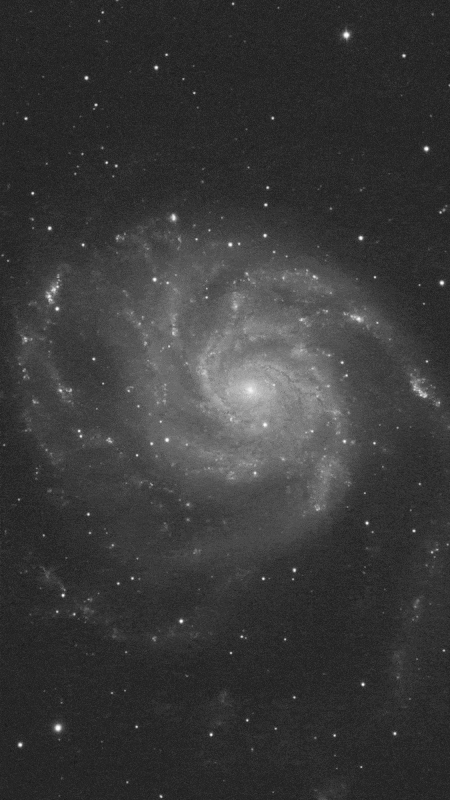Lucky Photographer Catches Largest Supernova in a Decade
![]()
The largest supernova seen in over a decade just exploded (from the perspective of observers on Earth), and one lucky photographer managed to capture it in a before-and-after sequence of photos.
Photographer Brennan Gilmore had been photographing that very galaxy for several weeks prior to the gigantic explosion, so he managed to catch the change in the night sky on camera.

The Story Behind the Shot
“In the astrophotography world, spring is known as ‘galaxy season’,” Gilmore tells PetaPixel. “During this time of year, the earth at night is pointed not inward towards our own galaxy but rather outwards towards the far reaches of intergalactic space.
“Imagine pulling over on an elevated overpass in the suburbs of a major city – you might turn and look back towards the skyscrapers of the urban center – our Milky Way’s core which we can see in Summer – or you can turn and look away towards the rural landscape beyond – intergalactic space which we see in the late Winter and Spring.”
During galaxy season, Gilmore usually points his telescope at very small targets in the night sky — galaxies that are found tens of millions of light-years away.
“Resolving these small galaxies demands large focal length telescopes and sensitive, cooled cameras,” he says. “It also requires many hours of exposure, as there is a trade-off between long focal lengths and light-gathering power (focal ratio or f stop). This means that to make one low-noise high-resolution photo from my backyard in central Virginia, I need multiple clear, moonless nights.
“This spring with lots of cloud cover, rain, and pervasive smoke from massive Canadian wildfires, the imaging nights have been few and far between.”
It was, therefore, “quite lucky” that Gilmore just happened to have his telescope trained on the Pinwheel Galaxy mere hours prior to Itagawa spotting the new supernova in the sky.
Spectroscopic studies soon confirmed it to be a Type II supernova, the cataclysmic destruction of a dying supergiant star.
“While such an explosion would spell certain destruction for any alien civilization within a radius of a couple dozen light years, astrophotographers on Earth suddenly had the chance to observe a rare phenomenon from a safe distance of 21 million light-years away,” Gilmore says.
Gilmore waited out some more clouds and rain before he managed to capture the “after” version containing the new supernova two days after the discovery.
“As soon as I could calibrate my telescope’s position, run my focus routine, and begin guiding for long exposures, I downloaded my first image,” he says. “The supernova was immediately apparent – indeed it shone brighter than the galaxy itself!”
Technical Details of the Photo
Between Gilmore’s “before” shot on Friday and his “after” shot on Sunday, the supernova had grown in intensity from magnitude 14.9 to 11.1.
“Astronomical magnitude, the measure of brightness of celestial targets, is a ‘backwards’ logarithmic scale, defined such that a magnitude 1 star is exactly 100 times brighter than a magnitude 6 star,” the photographer explains. “So by Sunday when I photographed the supernova at mag 11.1 it was approximately 33 times brighter than on Friday when it was discovered). ”
Gilmore’s photographs of the galaxy were each created with 4 hours of exposure time.
“The images I produced show the before and after of an explosion that contained the energy of billions of average stars, but at such an unfathomable distance it appears only as a bright dot of light,” he says. “Each image combines 120 two-minute exposures, shot with a Green filter (I happened to be collecting Green wavelengths to build an RGB image on the night prior to the supernova).
“I used a Celestron EDGE HD 9.25” Schmidt–Cassegrain telescope, with Chroma RGB filters and a ZWO 2600MM-Pro mono, cooled astro camera. I processed each photo using Astro Pixel Processor and Pixinsight, calibrating the light exposures with 20 dark frames, 15 flat frames, and 15 dark flat frames.”
Astrophotographers and astronomers are now fixing their cameras and telescopes on the Pinwheel Galaxy to observe and document what happens next with SN 2023ixf.
“Supernovae vary in duration and brightness,” Gilmore explains. “As of May 23, the magnitude is hovering around 11 – already remarkable as it is rare for supernovae to break mag 12. This puts it well out of the reach of naked eye visibility and slightly too dim for all but the most powerful binoculars.
“However, it can be seen with a relatively small (4”) telescope. That means we still have the chance to get out and observe this cataclysmic explosion from a long time ago in a galaxy far, far away.”